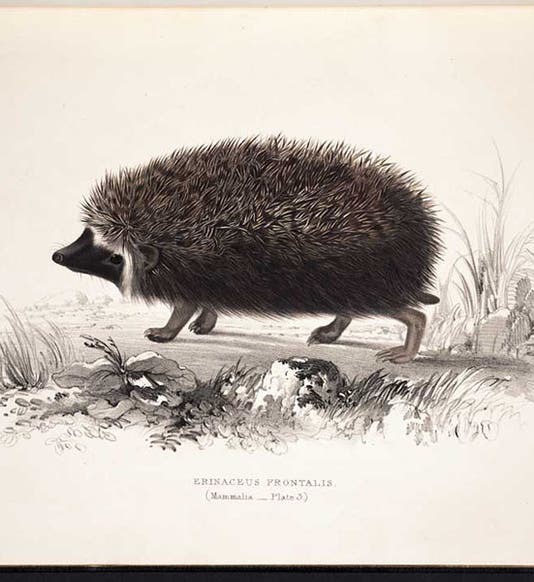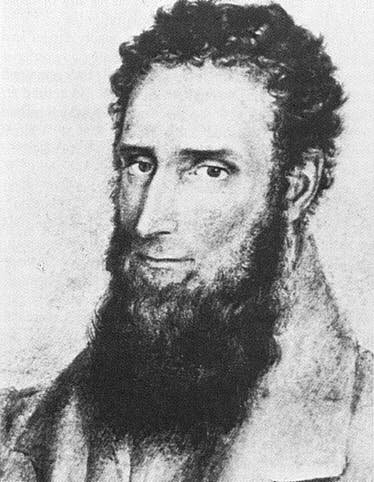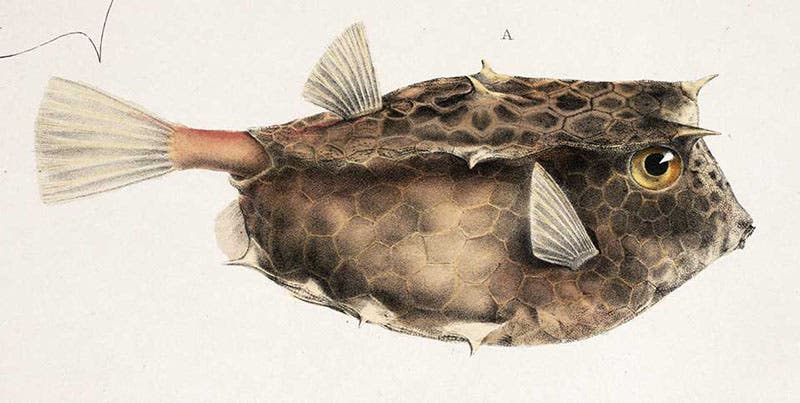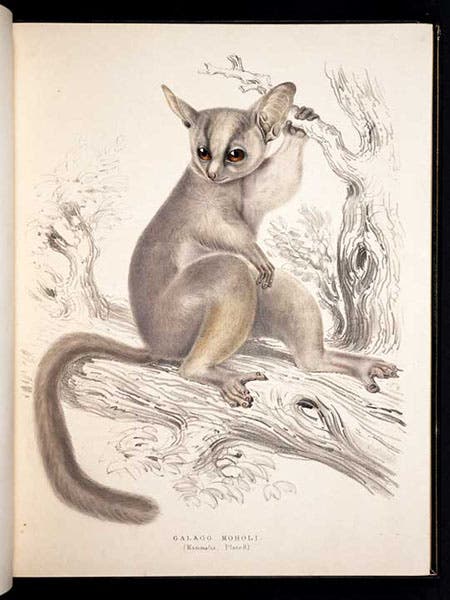Scientist of the Day - Andrew Smith
Andrew Smith, a Scottish naturalist and military medical officer, was born Dec. 3, 1797. Smith studied medicine at the University of Edinburgh, joined the British Royal Army, and was sent to South Africa in the 1820s, where, over the next decade, he not only proved his worth as an army physician, but made some of the first zoological expeditions into the interior of southern Africa. Upon his return to England, Smith began writing and publishing Illustrations of the Zoology of South Africa, which appeared in five beautiful volumes between 1838 and 1849. The illustrations were lithographs by Gerald H. Ford that served as an introduction for many readers to the fauna of the African savannas, and a number of the images are quite memorable. We selected for inclusion here the African hedgehog (first image), the black rhinoceros (third image), the blue wildebeest (fifth image), a galago (bush-baby; sixth image), and a hippopotamus (seventh image), all from the Mammalia volume, and a boxfish, from the volume on fish.
We wrote a post on the artist, Gerald H. Ford, earlier this year, where you may see additional images, mostly from the volume on birds, but also including a detail of the wonderful wildebeest.
We featured the mammal volume in our 2009 exhibition, The Grandeur of Life, where you may see the wildebeest and the hedgehog once more. It is hard not to include the wildebeest in any illustrated essay on Smith or Ford, it is such a delightful rendering.
Charles Darwin visited Smith in South Africa when HMS Beagle made a stop there in 1836 on its way home from South America, and the two men continued to correspond, since Darwin’s Zoology of the Voyage of the Beagle and Smith’s Zoology of South Africa shared the same publisher. Later, in 1857, Darwin nominated Smith for Fellowship in the Royal Society of London.
Smith eventually became Director-General of the Royal Army Medical Services. But he had to retire in 1858 because of poor health, and since he lived until 1872, his last years were probably not pleasant ones. He is buried in Kensal Green cemetery in London, the final resting place for at least a score of scientists and explorers that we have featured in this series.
This is a revision of a essay originally posted on Dec. 3, 2014. For this revision, we have expanded the text, added four images, including a portrait of Smith, included captions for all the images, and added a link to the post on Gerald H. Ford.
Dr. William B. Ashworth, Jr., Consultant for the History of Science, Linda Hall Library and Associate Professor emeritus, Department of History, University of Missouri-Kansas City. Comments or corrections are welcome; please direct to ashworthw@umkc.edu.













